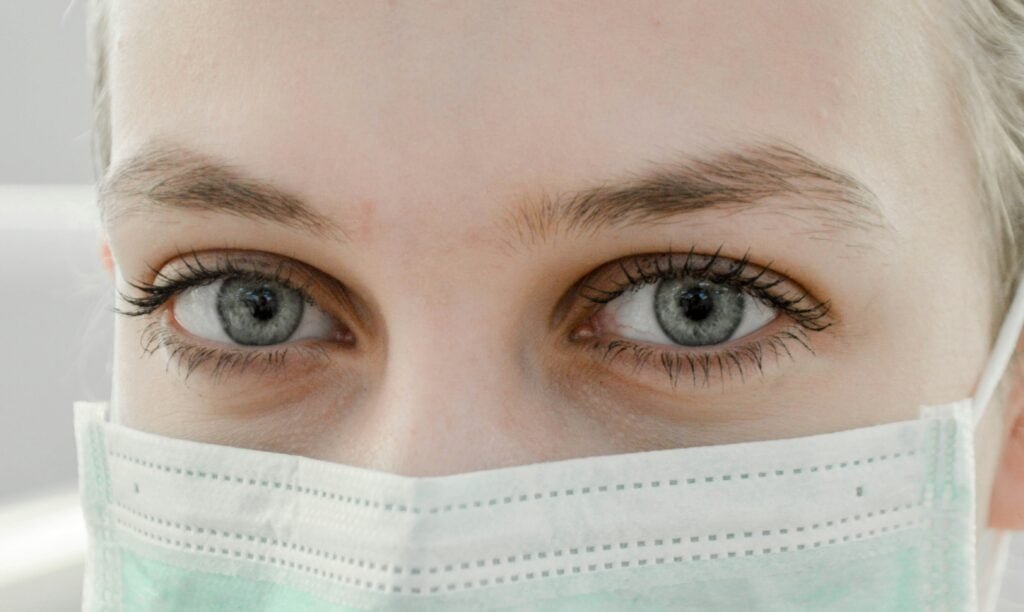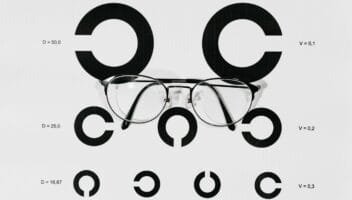Discover the most common eye problems, their symptoms, causes, and effective treatment options. Protect your vision with this comprehensive guide.
Introduction
Human eyes are essential organs in our bodies; using them allows us to observe and interact with the world around us. Unfortunately, many individuals encounter various eye issues throughout their lifetime and knowing which are typically seen can assist with taking proactive measures that protect vision or seek treatment when necessary.
Discover the top ten most prevalent eye conditions, their symptoms and causes, as well as safe treatment solutions available to address them. By understanding this process of maintaining good vision you’ll gain greater insight into preserving healthy eyesight while being better equipped to deal with any concerns that arise.

Eye Conditions Linked to Particular Medication
Certain medications can have negative side effects on the eyes. Corticosteroids, commonly used to treat inflammation, have been shown to increase risk for glaucoma and cataracts; antihistamines, beta-blockers, diuretics, and antidepressants may all increase dry eye syndrome risk. If you take medications regularly it’s important that you remain aware of their potential adverse reactions as well as discussing any concerns with your physician immediately.
Eye Problems Caused Due to Occupational Hazards
People engaged in certain occupations may be more vulnerable to eye problems. Chemical exposure can cause chemical burns and irritation; UV radiation exposure often associated with welding and outdoor work increases cataract and macular degeneration risks; dust particles can contribute to corneal abrasions and conjunctivitis while prolonged computer use has been associated with Computer Vision Syndrome, manifested through symptoms like eye strain, fatigue and headaches.
Eye Problems Caused Due to Lifestyle Factors
Your lifestyle choices can also have an effect on eye health. Smoking increases the risk of cataracts, macular degeneration, and glaucoma, while excessive alcohol intake damages optic nerves. A diet lacking essential nutrients may contribute to dry eye syndrome or night blindness – as is getting enough rest overall and protecting eye health in particular.
Eye Problems Caused Due to Geographic Location
Your geographic location can significantly influence the types of eye problems you encounter. Living in areas with sandy or dusty conditions increases the risk of corneal abrasions and conjunctivitis; exposure to UV radiation in regions with strong sunlight increases cataract and macular degeneration risks; infectious diseases like trachoma or river blindness may be more prevalent there;
Eye Problems Caused Due to Cultural Practices
Cultural practices may also impact eye health. Traditional medicine often utilizes herbal remedies or traditional eye treatments; some of which may be effective, while others could pose potential risks. Cultural beliefs about eye health can have an effectful influence on how people care for their eyes – for instance avoiding certain foods or behaviors which could damage vision.
Refractive Errors
Refractive errors are one of the most widespread eye issues, affecting millions of people worldwide, they arise when the shape of the eye prevents light from properly focusing onto the retina.
Myopia (Nearsightedness)
Have you ever experienced difficulty seeing objects far away? This could be the result of nearsightedness, known by its other name of myopia – short-sightedness – as people with myopia often have trouble with distant objects due to having too long an eye and light focusing in front of their retina instead of reaching it directly.
IHyperopia (Farsightedness)
Hyperopia, also known as “long-sightedness,” makes it difficult for its sufferers to view objects at close range due to an eye that is too short, causing light rays to focus behind the retina instead of directly onto it..
Astigmatism
Astigmatism, another of the more commonly-occurring refractive errors, occurs when either the cornea or lens have irregular shapes that lead to blurry vision at all distances. Think of an irregular surface like using a football for basketball; its uneven surface causes unpredictable bounce-back from shots as you try to make basket shots with it. An irregular cornea also distorts how light hits your retina.
Presbyopia
Our eyes change naturally with age, including presbyopia – an eye condition in which we gradually lose our ability to focus on nearby objects – leading to nearsightedness in those aged over 40 who require reading glasses for reading material.
You can correct refractive errors with the help of glasses and contact lenses or in some cases laser eye surgery. If you are experiencing blurry vision or having difficulty seeing clearly it’s essential that you consult with an eye doctor to ascertain whether there may be a refractive error present in your vision.

Age-Related Eye Diseases and Eye Problems
As we age, our eyes can become subject to many changes that affect both vision and quality of life. Many individuals worry about how age-related eye diseases might impact them and their quality of life.
Cataracts
Cataracts are an age-related eye condition, they appear as cloudy patches on the lens of the eye and cause visual disturbance akin to looking through fogged glass, disrupting vision. Larger cataracts may limit access to glasses or contact lenses.
Surgery is the solution for cataracts. During this procedure, cloudy lenses are removed and replaced with synthetic ones – offering safe and efficient vision improvement.
Glaucoma
Glaucoma is an age-related eye condition. It arises from increased eye pressure that impairs the optic nerve, the pathway connecting eyes to brain. If left untreated, irreparable vision loss may occur as a result of untreated glaucoma.
Preventing early-onset glaucoma loss by early diagnosis and treatment is of vital importance. Early identification requires regular eye examinations. Treatment options may include eye drops, laser surgery or non-invasive means.
Age-Related Macular Degeneration (AMD)
Age-related macular degeneration (AMD) is a condition which affects the macula – the central retinal region that provides sharp central vision – and leads to blurred or distorted eyesight as a result.
Dry and wet AMD are two main forms, with dry AMD being marked by gradual macular degeneration over time, although no cure exists yet for dry AMD management. Dry AMD can still be managed through diet changes and eye exam routines while wet AMD involves abnormal blood vessel formation beneath the macula that may progress but this progress can be stopped through injections to maintain or stop it altogether.

Other Common Eye Problems
Age-related eye diseases and refractive errors may be among the more commonly experienced forms of eye problems; however, other conditions could arise that affect people as well.
Dry Eye Syndrome
Dry Eye Syndrome occurs when eyes do not produce enough tears or they evaporate too rapidly, leading to dryness, irritation and blurred vision. Furthermore, this syndrome may produce burning sensations, light sensitivity issues or cause other discomforts which cause discomfort and may increase risk.
Treating dry eye syndrome requires artificial tears, eyelid care products or prescription eye drops; punctal plugs can also be placed to seal tear ducts in severe cases and reduce moisture loss.
Conjunctivitis (Pink Eye)
Pink Eye or Conjuntivitis refers to inflammation of the conjunctiva, a thin membrane covering both eyes and inner surfaces of eyelids, known as conjunctiva. This condition can be caused by viruses, bacteria or allergies and affects one or both eyes simultaneously.
Strabismus (Cross-Eyes)
Strabismus (Cross-Eyes), when one or both eyes become out of alignment, is known as “cross-eyes.” A muscle imbalance or nerve block may be to blame; it may occur at birth or later on during life.
Eyeglasses, prism lenses or surgery may be prescribed to treat strabismus. Early diagnosis and treatment are key in order to avoid vision problems caused by this condition
Blepharitis
Blepharitis, or eyelid inflammation, can result in redness, itching and crusting on eyelids, it may be caused by bacteria, mites or allergies – and is thus treatable.
The treatment for Blepharitis can be done using warm compresses, eyelid scrubs and antibiotic/antimicrobial eye drops. In severe cases, however, blepharitis may result in corneal ulcers and other eye issues.
Corneal Abrasion
An accidental scratch on the cornea (the clear outer layer of your eye), such as one caused by dust particles or nails can result in corneal abrasions. A foreign object such as dust may trigger it.
Pain, redness and light sensitivity are hallmarks of corneal disorders. Antibiotic eye drops or patches may help treat corneal scabs while providing additional protection – most corneal abrasions heal within days.

Additional Eye Problems and Their Causes
Beyond the obvious eye issues mentioned earlier, there are other ailments which can have a major impact on your eyesight. Direct trauma (e.g. accidents and sports-related injuries), perilous objects (foreign objects such as chemicals and radiation can have devastating results. Pain, redness, swelling and blurred vision are typically symptoms caused by these injuries.
Eye infection is a disease of the eye that may manifest themselves with symptoms like redness, pain, discharge, blurred vision and light sensitivity. One can get eye infections due to microorganisms such as bacterium, viruses or Fungi. The most common eye infection is Pink eye. Eye infections can not be treated by antibiotics alone as treatment depends on the type of infection you have. Home remedies can give temporary relief but consulting a professional is absolutely essential.
Probable Issues and Causes
Eye allergies often manifest with symptoms like itching, redness, watering, burning and swollen eyelids; such conditions include allergic conjunctivitis and allergic keratitis. Pollen, dust or pet dander exposure can exacerbate these reactions further while using antihistamine eye drops and cold compresses can provide some relief from symptoms.
Benign and malignant eye tumors can occur on either eyelid, with benign tumors appearing as lumps or masses, while malignant ones cause vision changes, pain or redness in either case. Treatment options available to you for eye tumors can include surgery, radiation therapy or chemotherapy treatments or combinations thereof.
Eye disorders in children may include strabismus, amblyopia, nearsightedness, farsightedry and astigmatism. Early identification and treatment can prevent vision loss as well as other complications.
If you are having any visual issues or are concerned about your vision, it is essential to seek treatment early with an eye care practitioner. Early detection and intervention can reduce further damage while improving quality of life.
Recap
Eye problems affect people of all ages, but the signs and symptoms of common issues can help you take steps to protect and treat them effectively. Regular eye exams are crucial in order to maintain good eyesight and detect any potential problems early.
If you are experiencing visual issues or are concerned about your eyesight, it’s essential that you visit an eye care practitioner. They can offer an accurate diagnosis and suggest the most suitable treatment option based on individual requirements.
Frequently Asked Questions
Can I naturally improve my eyesight?
Despite a lack of scientific proof, leading a healthy lifestyle is believed to significantly enhance eyesight. This includes eating well, exercising regularly and getting enough rest. For specific eye problems such as dry eye syndrome or blepharitis that need treatment at home remedies may work; diagnosis and care must be sought out through professional eye care providers.
Do OTC eye drops work for my eye problems?
Not all eye conditions can be treated using over-the-counter eye drops; consult an eye specialist for guidance on the most appropriate course of action.
Can I diagnose my eyes without professional assistance?
Self-diagnosis of eye conditions may be hazardous; for that reason it is best to seek professional advice from an eye doctor as many eye issues share similar symptoms.
What should I do if there have been sudden changes in my vision?
If you experience any unwelcome visual symptoms such as blurred or double vision or loss of sight, consult with a physician immediately as this could indicate serious eye disease.
Can I wear contact lenses if I have an eye condition?
Ultimately, your eye condition will dictate whether contact lenses are suitable for you. Eye care: Assess if wearing contacts poses any potential health risks before making this decision.




